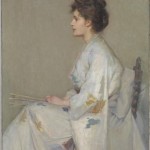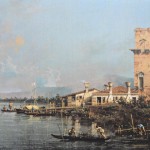
Longstaff’s Ladies ‘Portrait of a Lady: Sir John Longstaff’, Shepparton Art Museum, 18 February—22 April 2012. Curated by Susan Gillberg. Reviewed by Caroline Jordan John Longstaff (1861–1941) was a tall poppy in the Australian art world of the early twentieth century. The boy from Clunes, an historic little mining town near Ballarat, won the inaugural National Gallery of Victoria Travelling Scholarship for his affecting narrative painting of a young wife reeling in shock on hearing of the death of her miner husband in Breaking the News (1887, Art Gallery of Western Australia) (Fig. 1). This early success set the tone for a stellar international career. Longstaff was a successful exhibitor where it really mattered—in the Salons of London and Paris—and was five times Archibald Prize winner at home. Longstaff was knighted in 1928 and in 1936 he co-founded the Art Gallery…














